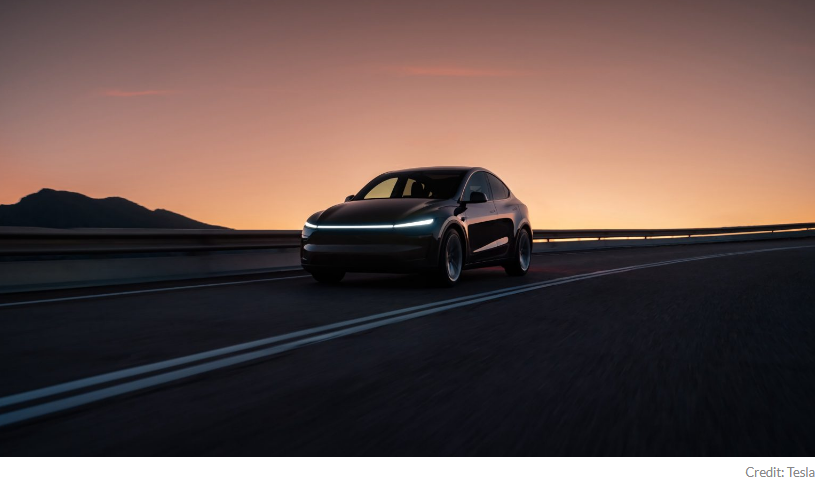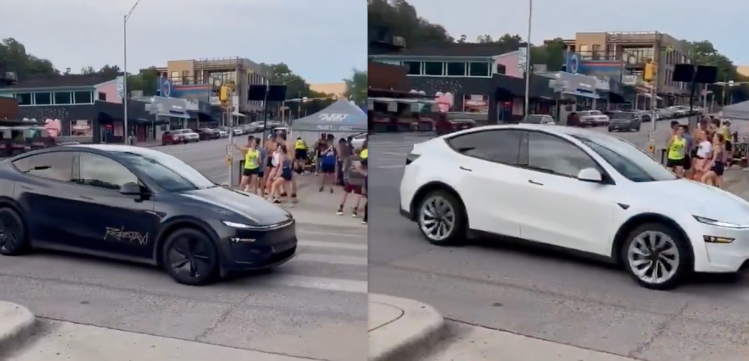
Tesla’s long-awaited robotaxi service is finally becoming a reality. CEO Elon Musk announced that public test rides will begin in Austin, Texas on June 22. Musk emphasized that safety is the highest priority and noted that the schedule may change to ensure a careful rollout.
Austin Robotaxi Launch Details
The initial rollout in Austin will feature a small fleet of 10 to 20 driverless Model Y vehicles operating within geofenced areas, meaning they will not cover the entire city. Recently, residents in a quiet southeast Austin neighborhood spotted these white Teslas repeatedly circling or parking on their streets. On social media, a video showed a “Robotaxi” clearly labeled on the door panel, making a turn with no one in the driver’s seat and only a passenger onboard.
Tesla’s autonomous vehicle testing status was confirmed when the company was officially listed in the “Testing” phase on Austin’s Department of Motor Vehicles website, alongside competitors like Waymo and Zoox. Musk stated that by the end of June, Austin residents should be able to use the robotaxi service without an invitation. He also mentioned that Tesla has been testing driverless cars on Austin streets without any incidents. Additionally, Musk revealed that the first Tesla capable of driving itself from the factory to a customer’s home is expected to be ready by June 28.

Safety Measures and Concerns
Tesla’s robotaxi safety strategy includes extensive testing through “Project Rodeo,” involving around 300 operators driving specially equipped vehicles along predetermined routes in Austin to minimize manual interventions.
Key safety measures include:
- Collaboration with local emergency services, providing training sessions for first responders to familiarize them with the technology
- Real-world simulations with about 60 drivers and vehicles to test responses in various traffic scenarios
- Remote monitoring of vehicles during the initial rollout and geofencing to the safest areas
- Testing on “critical tracks” for autonomous capability and “adversarial tracks” simulating challenging conditions
Despite these precautions, concerns remain. The National Highway Traffic Safety Administration (NHTSA) has requested detailed information on how Tesla plans to ensure safety in low-visibility conditions like fog, rain, and sun glare, as well as how vehicles will respond to collisions and interact with first responders. This inquiry comes amid reports of 51 fatalities linked to Tesla’s autopilot system, raising safety questions among Texans. Tesla must respond to NHTSA’s inquiries by June 19, just days before the planned public launch.

Model Y as the First Robotaxi
Tesla’s initial robotaxi fleet will utilize the Model Y SUV, rather than the futuristic CyberCab planned for production next year. Recent footage from Austin shows these vehicles operating with “Robotaxi” logos tastefully placed on their front doors, maintaining a sleek appearance while clearly identifying their autonomous status.
Tesla is using unmodified production vehicles coming directly from their manufacturing facilities, and Musk claims these vehicles are capable of unsupervised driving. Ahead of the launch, several Model Ys equipped with robotaxi validation equipment have been spotted in Austin. In a demonstration of readiness, Tesla recently operated a test vehicle on public roads with no one in the driver’s seat—only a Tesla engineer in the passenger seat—navigating autonomously without remote operation.
This marks a significant step toward Musk’s vision of transforming Tesla from primarily an electric vehicle manufacturer to a company centered around autonomous vehicles and artificial intelligence.
It will be exciting to see how Tesla’s robotaxi pilot service in Austin shapes the future of autonomous mobility.
'IT News' 카테고리의 다른 글
| Apple Just Changed the Way You Unlock Your Car Forever: 13 New Brands Join CarKey Revolution! (3) | 2025.06.11 |
|---|---|
| 애플, 디지털 키 기능에 13개 자동차 브랜드 추가하다! (2) | 2025.06.11 |
| 테슬라 로보택시, 6월 22일 오스틴에서 대중 시승 시작 (0) | 2025.06.11 |
| 풍력터빈로봇도 등장! 스스로 사고하는 4발 로봇의 진화 (1) | 2025.06.03 |
| SpaceX Starbase(텍사스) vs Florida(플로리다) Gigabay 비교 (3) | 2025.06.03 |